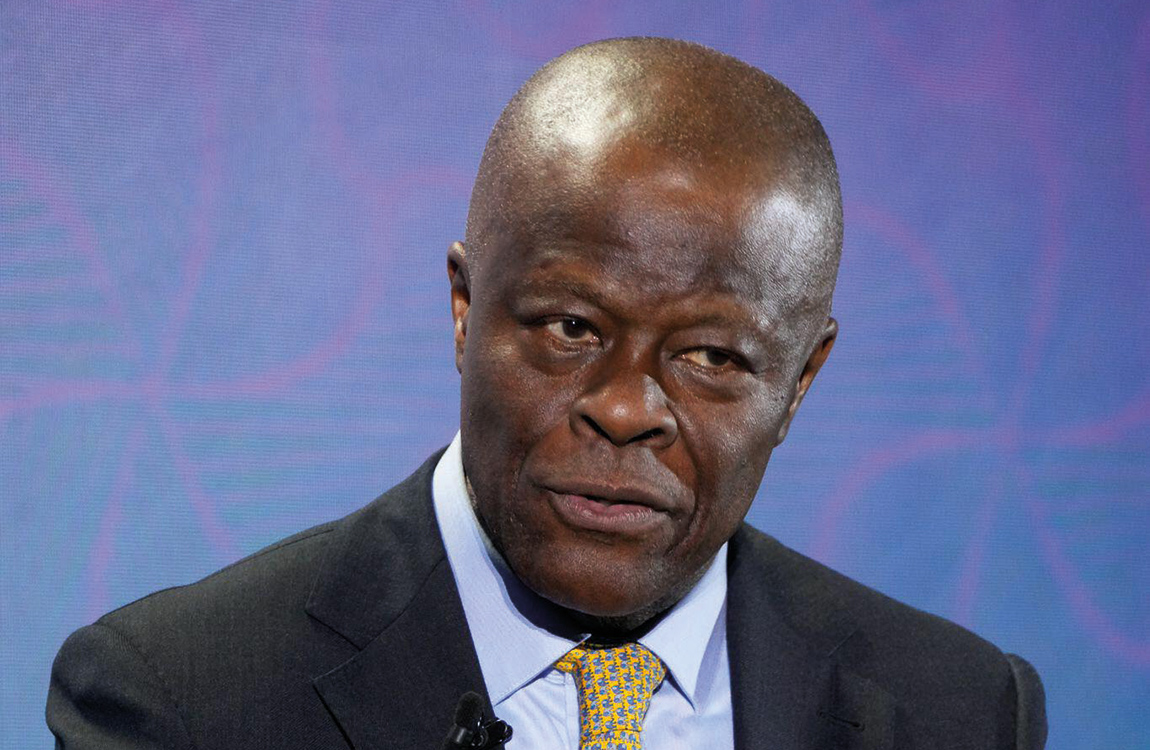Xiaomi at 15: Strategic Leap with YU7 EV, In-House Xuanjie O1 SoC, and AI-Powered Ecosystem
Alright folks, buckle up! If you’re even remotely interested in tech, China, or how the two are increasingly shaping our world, then you’ll want to pay attention. Xiaomi (小米), a name that many Americans might associate primarily with smartphones, is about to celebrate its 15th anniversary. Now, in the hyper-speed world of Chinese tech, 15 years is practically an eon, a testament to survival, adaptation, and relentless ambition. And Xiaomi isn’t just cutting a cake; they’re throwing a “战略发布会” (zhànlüè fābùhuì), which translates to a “Strategic Conference.” This isn’t your average product launch; it’s a statement, a roadmap, and a peek into what they’re cooking up for the next chapter. As an American blogger who’s been navigating the wild and wonderful landscape of China for a while, this event, slated for May 22nd, is one I’ve circled in bright red on my calendar.1 Why? Because what Xiaomi unveils often tells us a lot about where Chinese tech is headed, and increasingly, where global tech might follow.
For those not deeply embedded in the China tech scene, a little context on Xiaomi is essential. Founded on April 6, 2010, by Lei Jun and a group of co-founders, Xiaomi burst onto the scene with a disruptive model.3 Often dubbed “China’s Apple” in its early days, its initial strategy was elegantly simple: offer high-spec smartphones at near-cost prices, build a passionate fan community – the “米粉” (mǐfěn, literally “rice fans,” a clever pun on Mi) – and sell directly to consumers online, cutting out expensive retail overheads.4 Their MIUI operating system, an Android fork, was a key part of this, with weekly updates incorporating fan feedback, fostering a sense of co-creation.4 This “internet thinking” – “专注、极致、口碑、快” (zhuānzhù, jízhì, kǒubēi, kuài: focus, perfection, word-of-mouth, speed) – catapulted them to success.4
But Xiaomi didn’t stop at phones. Lei Jun, a seasoned entrepreneur often compared to Steve Jobs for his product focus and presentation style, had a grander vision. The company rapidly expanded into a dizzying array of product categories: smart TVs, routers, air purifiers, rice cookers (yes, a smart rice cooker was an early hit under their MIJIA brand 3), fitness bands, electric scooters, and a whole universe of Internet of Things (IoT) devices. They achieved this through a unique “ecosystem model,” investing in and partnering with numerous smaller companies to produce these products under the Xiaomi umbrella, ensuring they adhered to Xiaomi’s design and quality standards while benefiting from its brand and sales channels.4
This journey hasn’t been without its bumps. They faced intense domestic competition, periods of slowing growth, and the challenge of shedding the “cheap” label as they pushed into more premium segments.7 Yet, they’ve shown remarkable resilience. They became the youngest company on the Fortune Global 500 list in 2019 3 and have consistently ranked among the top global smartphone shippers.8 Key milestones include the launch of their first phone in 2011, the first “Mi Fan Festival” in 2012, entering international markets in 2014, launching the MIJIA smart home brand in 2016, and, dramatically, announcing their entry into the smart electric vehicle (EV) market in 2021 with a $10 billion USD commitment over ten years.3 This EV venture, a massive gamble, culminated in the launch of the SU7 sedan in early 2024, a car that generated enormous buzz and surprisingly strong initial orders.11
The 15th anniversary comes at a pivotal moment. Xiaomi is no longer just a plucky startup. It’s a global tech giant with revenues hitting RMB 365.9 billion (approx. $50.5 billion USD) in 2024 and a bold strategy for the future.9 This strategic conference is where they’ll lay out that future.
So, what’s on the docket for May 22nd? Thanks to official announcements and the ever-churning rumor mill (which, in China, is often surprisingly accurate), we have a pretty good idea. This isn’t just about one hero product; it’s a multi-pronged showcase of Xiaomi’s ambitions across its core and emerging businesses.1
Underpinning all these hardware announcements will be a heavy emphasis on Artificial Intelligence (AI) and Xiaomi HyperOS (澎湃OS – Péngpài OS). Xiaomi has committed to investing RMB 100 billion in R&D over five years (2022-2026), with a significant chunk dedicated to AI, OS, and chips.20 For 2025 alone, RMB 30 billion is earmarked for R&D, with a quarter of that (RMB 7.5 billion) going to AI.32
HyperOS, launched in late 2023, is Xiaomi’s ambitious operating system designed to unify its vast ecosystem of devices – from phones and tablets to smart home gadgets and now cars.32 It’s built on a foundation that includes Linux and Xiaomi’s own Vela real-time operating system. The goal is seamless connectivity and intelligence across the “Human x Car x Home” spectrum. Expect to hear how AI is being woven deeper into HyperOS, potentially evolving it into an “AIOS” 25, and how the Xuanjie O1 chip is optimized to power these AI-driven experiences on devices. The synergy between the new chip, the updated OS, and the diverse hardware is what Xiaomi hopes will give it a unique edge.
This phrase, “人车家全生态” (rén chē jiā quán shēngtài), is central to understanding Xiaomi’s current and future strategy. It translates to “Human x Car x Home Full Ecosystem” and represents their vision of a seamlessly interconnected world powered by Xiaomi devices and services.32
The magic, Xiaomi believes, lies in the “x” – the interconnection and synergy between these domains. HyperOS is the software backbone enabling this, designed for cross-device collaboration, resource sharing, and intelligent task handoff.32 AI is the intelligence layer, learning user habits and proactively offering assistance. For example, your car could automatically turn on your home air conditioning as you approach, or your smartwatch could display a notification from your smart doorbell.37
This ecosystem strategy is crucial for several reasons. It increases user stickiness – once you’re invested in multiple Xiaomi devices, the seamless experience makes it harder to switch. It also creates new revenue opportunities through services and cross-selling. Furthermore, it allows Xiaomi to differentiate itself from competitors who might be strong in one area (like phones or cars) but lack the breadth of Xiaomi’s portfolio.36 Investment banks like Morgan Stanley and Goldman Sachs have noted that this AI-driven ecosystem creates a unique “moat” for Xiaomi, with the potential for significant growth.32 The successful integration of these diverse elements, however, is a monumental task, requiring not just technological prowess but also a deep understanding of user experience across vastly different contexts.
Let’s break down the anticipated announcements and what they mean for Xiaomi and the wider tech world.
The SU7 sedan was a bold first step, and the YU7 SUV signals that Xiaomi is serious about becoming a major player in the EV space.
The announcement of a self-designed 3nm mobile SoC is a landmark moment.
These devices will be the flag bearers for Xiaomi’s latest tech.
Xiaomi built its empire on the back of its “米粉” (mǐfěn) community.4 These loyal fans provided feedback, evangelized products, and created a vibrant culture around the brand.
This strategic conference isn’t happening in a vacuum. It reflects broader trends in the Chinese tech industry and Xiaomi’s own evolving ambitions.
Xiaomi isn’t shy about its goal: to be a “科技生态领军者” – a leader in the tech ecosystem.32 This is a step beyond just being a successful hardware company. It implies setting standards, driving innovation across multiple interconnected sectors, and creating a platform that other developers and companies can build upon. The “Human x Car x Home” strategy, powered by AI and HyperOS, is the blueprint for achieving this. This ambition is underpinned by a massive commitment to R&D, with plans to invest over RMB 100 billion between 2022 and 2026.3
This drive towards becoming an ecosystem leader is a natural evolution for a company that started with a disruptive, low-margin hardware model. To ensure long-term profitability and defensibility, Xiaomi needs to own more of the core technology and create a sticky ecosystem that locks users in through convenience and superior integrated experiences. The shift towards “hardcore technology” (硬核科技 – yìnghé kējì) 7 is a direct consequence of this ambition, a necessary step to justify premium pricing and build a lasting competitive advantage beyond just “性价比” (xìngjiàbǐ – cost-effectiveness).5 The journey from the early, somewhat underwhelming Surge S1 chip to the promise of the 3nm Xuanjie O1 exemplifies this difficult but essential transition.20
Xiaomi operates in some of the world’s most competitive markets:
- While Xiaomi is a global leader in connected IoT devices 3, competition is intensifying from other tech giants like Huawei, Haier, and even international players like Amazon and Google in specific smart home categories.
Xiaomi’s 15-year journey is a story of overcoming challenges.
- The SU7 carbon fiber hood incident, where owners found the advertised aerodynamic channels non-functional, forced a public apology and compensation plan.13 How Xiaomi navigates such PR crises in the high-stakes automotive world will be crucial.
- The path to chip independence has been long and arduous, from the early struggles with Surge S1 to the significant investment in Xuanjie O1.18 This persistence is a hallmark of Lei Jun’s leadership.
- Managing a complex global supply chain, especially for a diverse hardware portfolio amidst geopolitical tensions, remains a constant challenge. Lei Jun personally took charge of the supply chain in 2016 during a difficult period, showcasing its strategic importance.4
- Maintaining product quality while rapidly scaling production and entering new, complex fields like automotive manufacturing is an ongoing test. Lei Jun has always emphasized product quality, even making it a point to involve users in the development process from the very beginning.4
Xiaomi’s future hinges on its ability to innovate. The massive R&D commitments are not just for show; they are existential.3 The focus on “hardcore technology” 7 is a clear signal that Xiaomi intends to compete on fundamental innovation, not just clever product packaging or aggressive pricing. Key R&D areas include AI (with a dedicated RMB 7.5 billion in 2025 32), autonomous driving (where Xiaomi has invested heavily, with a team of over 1000 and technologies like BEV+Transformer and end-to-end models 34), chips, operating systems, new materials, and advanced manufacturing processes, including their own smart factories.64
The global expansion of the “Human x Car x Home” ecosystem will likely be a carefully phased and highly localized endeavor. While smartphones and wearables are already global, the “Car” and “Home” segments present unique challenges in each market due to differing infrastructure, standards, regulations, and consumer habits. The full, deeply integrated Mi Home experience, for example, relies on a vast array of IoT products, not all of which will be immediately suitable or available internationally. Similarly, rolling out EVs globally requires navigating complex homologation processes, different safety standards, and building entirely new sales and service networks. HyperOS itself will need robust multilingual support and integration with local services to be truly global. Therefore, while the vision is grand, its complete realization will likely appear first and most comprehensively in China. International markets may see a more tailored approach, focusing on specific product categories or partnerships that make sense locally, rather than a blanket rollout of the entire ecosystem, aligning with a strategy of “deep localization”.65
So, why should someone in America, perhaps unfamiliar with the intricacies of the Chinese tech scene, care about Xiaomi’s 15th-anniversary strategic conference?
This event is far more than a product launch. It’s Xiaomi planting its flag, declaring its ambition to be a comprehensive, vertically integrated tech leader on the global stage.26 The Xuanjie O1 chip symbolizes a bold stride towards technological independence. The YU7 SUV reaffirms a serious, long-term commitment to the challenging EV market. The new flagship phones and tablets will push the boundaries of mobile innovation. And tying it all together is the grand vision of the “Human x Car x Home” ecosystem, orchestrated by an increasingly AI-infused HyperOS. This is Xiaomi signaling it’s playing for keeps, aiming to shape the next era of interconnected technology. The conference marks a pivot from a phase of rapid growth and diversification to one focused on sustained, integrated innovation, building lasting, defensible advantages.
For American consumers, Xiaomi’s trajectory could mean access to more innovative and potentially more integrated product experiences down the line, even if direct availability of all products (especially cars initially) is limited. More broadly, a strong, innovative Xiaomi puts competitive pressure on established global players, which can ultimately benefit consumers everywhere through better products and prices.
For the tech industry, Xiaomi’s moves are a disruptive force. Its deep dive into custom silicon with Xuanjie O1 challenges the dominance of existing chipmakers. Its aggressive entry into the EV market adds another formidable competitor to an already crowded field. And its holistic ecosystem approach, if successful on a global scale, could become a compelling model for other companies striving to create seamless user experiences across multiple device categories. The rise of technologically sophisticated Chinese companies like Xiaomi is undeniably reshaping the global tech landscape, a trend that has profound implications for innovation, competition, and even geopolitics.66
Xiaomi has come an incredibly long way in 15 years, evolving from a smartphone disruptor to a sprawling tech conglomerate with a bold, all-encompassing vision.32 The ambition to become a “tech ecosystem leader” is audacious. The path is fraught with challenges: the sheer intensity of competition in every major market it targets, the immense executional complexity of its “Human x Car x Home” strategy, the financial risks of massive R&D and automotive ventures, and the ever-present geopolitical factors that can impact global tech companies.
This 15th-anniversary strategic conference will be a critical moment to assess Xiaomi’s progress and its preparedness for these challenges. The products unveiled, the strategies articulated by Lei Jun and his team, and the technological capabilities showcased will offer vital clues. Can Xiaomi truly master the intricate dance of hardware, software, and services across such diverse domains? Can it successfully transition to a premium brand while retaining the innovative spirit that defined its early years? The answers to these questions will not only determine Xiaomi’s future but will also provide a fascinating insight into the evolving dynamics of the global technology industry. One thing is certain: the world will be watching.













